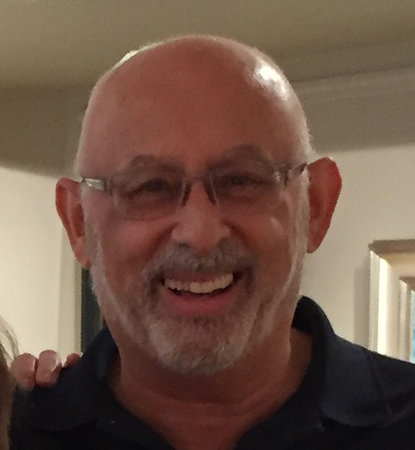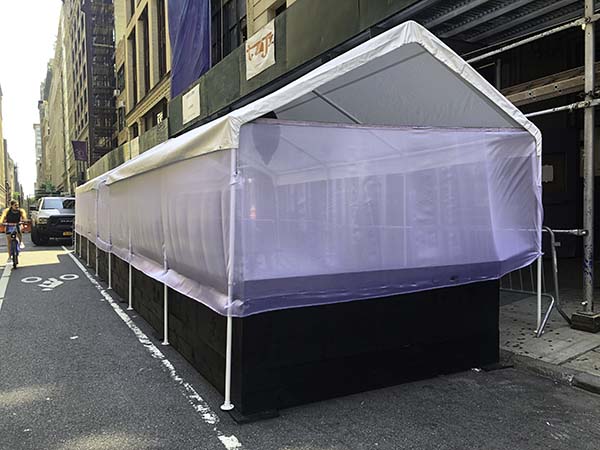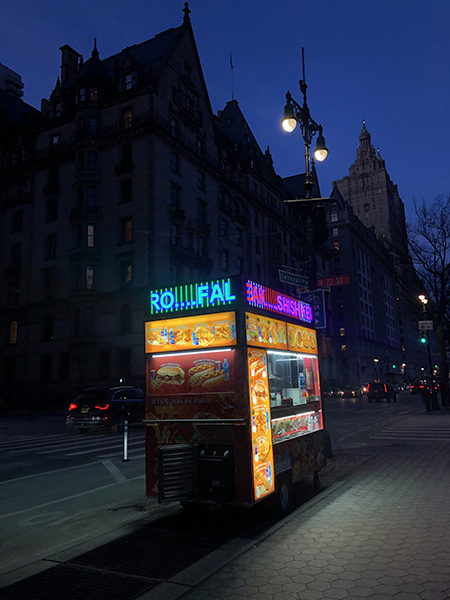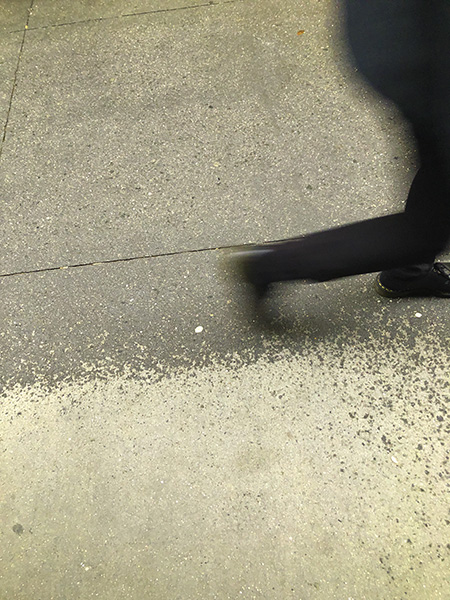A Conversation on the State of Art Licensing
A Conversation on the State of Art Licensing
with Lance J. Klass, President of Porterfield’s Fine Art Licensing
by Carolyn Edlund, President, ArtsyShark
I recently spoke with Lance Klass, President of Porterfield’s Fine Art Licensing, who shared insights on industry changes and how to succeed in the business.

Lance Klass of Porterfield’s Fine Art Licensing
AS: You are an art licensing agent and an expert in the licensing field. In recent years, there have been a lot of changes in the industry. How do you see it?
LK: I think it’s much more difficult for artists who seek to break into the industry nowadays. When I started Porterfield’s Fine Art Licensing 25 years ago, it was very simple. If you had a contact at a company that used art, it was a direct contact and a place to send artwork to be reviewed. Everyone sent their submissions through the mail; it was a different world.
As more people started to use computers and email, Photoshop became the main player, and artists would send jpgs of their images for review. I recall one card company that looked at 30,000 images a year. They did it in an old-fashioned way. They took the images, printed them out and put them up on boards. Then product managers would look at the boards and say, “Maybe this one, or that one.” The whole process was a monster.
These days it can still be a monster for artists. Unless you know a specific person at the right company that could use your art, and have developed a relationship where your name is familiar to them and the look of your art is something they might conceivably license, you are going to have a very difficult time. It hasn’t gotten easier over the years.
AS: Some artists hesitate to get into licensing or feel they can’t be effective. They want an agent, but of course there are only so many agents available. It becomes a vicious circle. What do you do?
LK: A lot of artists are hesitant to get into art licensing because they don’t understand it. They also are afraid to send out their art because they don’t want to be rejected. So to them, art licensing is confusing and scary as well. Often they just don’t have the knowledge to understand how to produce.
Many of the artist who attempt to enter the field of art licensing haven’t done their research and have not developed the contacts they need to proceed effectively. They haven’t even discovered what companies to research. All they know is that they have painted this or that, and don’t know who might like it. Nowadays they can at least post it on Facebook and get comments from people who say “That would look really good as a bedspread,” or “That would look on paper products or as wall décor.” So they go in the direction that seems to make sense to them but, lacking sufficient knowledge, they can fairly often discover later on that they’ve been going in the wrong direction.
As for the idea that there are too many artists contacting licensing agencies, and few agencies available, that isn’t quite the way it is now. It used to be that my company, Porterfield’s, received about 1,000 submissions from artists per year. That was three or four submissions every single day of the year. It was extraordinary. Out of 1,000 artists, I might take two or three if they had a style of art and subject matter and technical ability that I thought might fly in certain categories of merchandise that I had inroads into.
Nowadays I don’t get 1,000 submissions a year. It slowed down to about 500 a year or two ago. At present I receive perhaps five a week, which is 250 a year. Most of those contacting me haven’t bothered to look at my site to see the type of art that I represent, so they shouldn’t have been sending me anything at all.
AS: Do you feel that having an agent is absolutely necessary if an artist is going to make it in licensing?
LK: Somehow the artist needs to be able to show his or her art to the marketing, creative or licensing people at companies that might be prospective licensees, and they can either develop a list of contacts themselves or be represented by an agency that has already developed licensing relationships with many companies over many years. There are successful artists who haven’t had agents. Instead, they have essentially become their own agents. First of all, they have to have thick skins and not take it personally when they are rejected. And they must be personable on the phone so they can get through to the person who reviews art, or at least get a name and an email address or a phone number and extension number.
These are the artists who will go to the big box stores and walk around looking at products and wall décor to identify companies that make products that might fit their art. Then the artist can start looking at the company site online and see what they make and the stores that carry their lines. They try and find the person at that company who should be contacted – and then do that.
These artists have a way to show their art, such as attaching jpgs to an email, and they have perfected an approach letter to use. Then they send samples and take it from there. That is the beginning of building a personal relationship to the point where when the buyer hears that you are on the phone, she wants to speak with you. All because they got that great set of images that were used on products that did well for them. So, they want to see what else you might have available in your portfolio that might be of use commercially on their products.
There are a number of artists who do this by themselves, even after being represented by agents for years. They try going out on their own, because they know the names of people at key companies. They may have to wait until an exclusionary period at the end of their representation agreement, but then they can go out to those people directly.
AS: What you are talking about is straight up sales strategy. The hard, in-the-trenches work that any salesperson has to do to identify their audience, find the right people, understand their needs, present professionally, provide solutions, show up at the right time and follow up.
LK: You are absolutely right. Find out what is needed and wanted, and then produce it and sell it.
One thing I’ve noticed people do respond to is bulk emails. They are a terrific tool. I’ve built a list of almost 2,000 people who are licensing agents, manufacturers, publishers, creative directors or marketing directors. I will occasionally send them a bulk email promotion about new art. I can see from analytics who has opened my email, who has clicked on it and what images they clicked on. I have their email address, and I know how to contact them.
I can then send them a direct email saying, “Hi, I checked my email results and noticed you have shown interest in a number of images by our artists. Are you actively looking for art for your products?” I’ll either be quite familiar with their company, or have checked them out online. I can see what they are specializing in these days, so I’m not an idiot on the telephone, or through email. I do most of my work on the computer these days.
AS: What are some of the big shifts that you see happening in the licensing industry, and where do you see it going?
LK: Well, there have been shifts at conventions related to the industry. The Licensing Show, which moved from New York to Las Vegas, doesn’t seem to put much attention on promoting individuals and agencies involved in art licensing, although there have been some agents that have been very successful in their out-of-the-way corner of the convention center. Regarding SURTEX, which became the go-to convention once the Licensing Show moved to Las Vegas, I honestly don’t know if it’s going to be around in two or three years. The new owners seemed to know little or nothing about the field of art licensing, and they’ve struggled; the convention moved from May to very-cold February in New York and now seems to be a minor adjunct to the National Stationery Show. I did the numbers on my last showing at SURTEX and they were a disaster. I have made so much more money since I stopped doing SURTEX and the Licensing Show in Vegas because they are very expensive and time-consuming. I’m not a fan.
What’s happening instead is that two new shows have come up to replace it. One is PrintSource, which I understand is doing very well. But the most exciting, to me at least, is BluePrint, which has gone increasingly into art licensing. Both of these shows began with a hub of design studios that represented one or more decorative artists, and they would sell the art outright as surface-designed textiles and that sort of thing.
PrintSource and BluePrint have expanded into attracting agents that want to license art to customers, and I am seriously considering doing my first show in three or four years.
These two new shows are very intriguing. They are more comfortable, relaxing and enjoyable. You don’t have the massive crowds, and yet the people who show at PrintSource, and especially BluePrint, apparently can do very well. It’s like when you dig the bed in your garden because the plants have gotten miserable and gotten old, and low and behold new plants are coming up that are just wonderful. It might be that way inn art licensing for some years to come.


















Care To Comment?